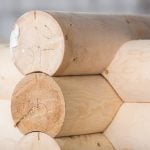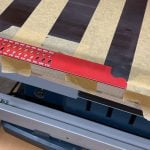Are surgical masks good for woodworking? When it comes to respiratory protection in woodworking, the use of appropriate masks is crucial. Woodworking activities can pose potential hazards to respiratory health due to the inhalation of wood dust and other airborne particles. In this article, we will explore the effectiveness of surgical masks in providing respiratory protection for woodworking tasks.
Woodworking hazards can include exposure to wood dust, chemicals used in finishing processes, and potential allergens from various types of wood. These hazards can lead to respiratory issues such as asthma, allergies, and lung irritation. As such, finding the right type of mask for woodworking is essential for protecting your respiratory health.
Surgical masks are commonly used for various purposes, including healthcare settings and general protection against airborne particles. However, their effectiveness in providing adequate respiratory protection in woodworking environments has been a topic of discussion. In this article, we will delve into the level of protection offered by surgical masks and compare them with other types of respiratory protection commonly used in woodworking, such as N95 respirators.
Types of Woodworking Hazards
Woodworking involves working with various types of wood, which can pose potential risks to respiratory health. One of the primary hazards in woodworking is the inhalation of wood dust, which can lead to a range of respiratory issues. Wood dust contains tiny particles that can be inhaled and cause irritation to the nose, throat, and lungs. Prolonged exposure to wood dust can also lead to more serious health conditions such as asthma, bronchitis, and even cancer.
In addition to wood dust, woodworking also exposes individuals to fumes from certain types of wood, such as cedar or pine. These fumes can irritate the respiratory system and lead to symptoms like coughing, wheezing, and shortness of breath. Furthermore, woodworking processes like sanding, cutting, and shaping wood can generate airborne particles that pose inhalation risks.
Given these potential hazards to respiratory health in woodworking environments, it is crucial for individuals engaged in woodworking activities to prioritize respiratory protection. This includes assessing the effectiveness of different types of masks and respirators in providing adequate protection against wood dust and other airborne hazards.
| Woodworking Hazard | Potential Risks |
|---|---|
| Wood Dust | Irritation, asthma, bronchitis, cancer |
| Wood Fumes | Coughing, wheezing, shortness of breath |
| Airborne Particles from Woodworking Processes | Inhalation risks |
Effectiveness of Surgical Masks
Surgical masks have become a common sight in various settings, including woodworking environments, as individuals seek to protect themselves from inhaling dust and other airborne particles. However, the question of whether surgical masks are effective in providing adequate protection in woodworking environments remains a topic of discussion. When it comes to evaluating the effectiveness of surgical masks for woodworking, it is essential to consider several factors.
One of the primary considerations when assessing the effectiveness of surgical masks in woodworking environments is their ability to filter out wood dust and other fine particles. Surgical masks are designed to provide barrier protection against larger droplets, splashes, or sprays that may contain viruses or bacteria.
While they may offer some level of protection against larger wood particles, they are not specifically designed to filter out the fine dust particles produced during woodworking activities. This limitation raises concerns about their overall effectiveness in providing adequate respiratory protection in such environments.
Moreover, the fit of surgical masks plays a crucial role in determining their effectiveness. A proper seal around the nose and mouth is essential for minimizing the risk of inhaling airborne contaminants. However, surgical masks may not always provide a tight seal against the face, which can compromise their efficacy in filtering out wood dust effectively. As a result, individuals who rely solely on surgical masks for respiratory protection during woodworking may still be at risk of inhaling harmful particles.
Given these considerations, it becomes evident that while surgical masks may offer some level of basic protection in woodworking environments, they are not specifically designed to address the unique respiratory hazards associated with working with wood. Woodworkers looking for more comprehensive respiratory protection should consider alternative options such as N95 respirators, which are specifically designed to filter out fine particles and provide a tighter seal against the face.
| Consideration | Effectiveness |
|---|---|
| Filtering Fine Particles | Limited |
| Fit and Seal | Compromised |
| Comparison with N95 Respirators | Better Alternative |
Comparison With Other Respiratory Protection
Effectiveness of Surgical Masks
Surgical masks are commonly used as a form of respiratory protection in various industries, including woodworking. However, it’s important to understand their effectiveness in comparison to other types of masks, such as N95 respirators. Surgical masks are designed to provide a barrier between the wearer’s mouth and nose and potential contaminants, including large particles and droplets. They are not specifically designed to filter out small airborne particles like those found in woodworking environments.
Comparison With N95 Respirators
N95 respirators, on the other hand, are specifically designed to filter out 95% of small airborne particles, including those that may be present in woodworking settings. This makes N95 respirators more effective at providing respiratory protection against wood dust and other fine particulates. When comparing surgical masks with N95 respirators for woodworking purposes, the latter provides a higher level of protection due to its filtration capabilities.
Considerations for Woodworking Safety
While surgical masks may offer some level of protection against larger particles and droplets in woodworking environments, they are not as effective as N95 respirators in filtering out fine airborne particles. Therefore, when working with wood and potentially hazardous dust or particulates, it is recommended to consider using N95 respirators for better respiratory protection. It’s important to prioritize safety and choose the appropriate respiratory protection based on the specific hazards present in woodworking tasks.
Proper Fit and Usage
Choosing the Right Size
When using surgical masks for woodworking, it is crucial to ensure that the mask fits properly to maximize its effectiveness. Selecting the right size is essential, as a loose-fitting mask may not provide adequate protection against wood particles and dust. It is recommended to choose a surgical mask that snugly covers the nose, mouth, and chin without any gaps or spaces.
Securing the Mask
Once the appropriate size of the surgical mask has been chosen, it is important to ensure that it is securely fastened in place. The metal strip at the top of the mask should be pressed down over the bridge of the nose, while the elastic bands should be looped around each ear and adjusted for a comfortable but secure fit. This will help prevent any potential gaps through which wood particles could enter.
Replacing as Needed
In order to maintain optimal protection while woodworking, it is essential to replace disposable surgical masks regularly. As wood dust can clog up the fibers of the mask over time, reducing its effectiveness, it is advisable to replace a surgical mask when it becomes damp or visibly dirty. By doing so, woodworkers can ensure that they are always benefitting from proper respiratory protection during their woodworking activities.
By following these guidelines for properly fitting and using surgical masks in woodworking environments, individuals can help maximize their effectiveness in protecting against wood particles and dust. These measures also underscore the importance of respiratory safety precautions in woodworking endeavors.
Potential Limitations
When it comes to protecting yourself from potential respiratory hazards while woodworking, surgical masks can offer some level of protection. However, there are certain limitations and drawbacks to consider when using surgical masks in this environment. It is important to be aware of these factors in order to make an informed decision about the most suitable respiratory protection for woodworking activities.
Some potential limitations of using surgical masks for woodworking include:
- Particle Filtration Efficiency: Surgical masks may not have the same level of particle filtration efficiency as N95 respirators, which are specifically designed to filter out airborne particles.
- Fit and Seal: Surgical masks may not provide a tight seal around the face, allowing small wood particles and dust to enter through the gaps, potentially exposing the wearer to respiratory hazards.
- Durability: Surgical masks are not designed for extended use in dusty or rugged environments, and their effectiveness may decrease over time as they become damp or soiled.
Considering these limitations, it is important for individuals engaged in woodworking activities to carefully assess the specific respiratory hazards they may encounter and determine whether surgical masks provide adequate protection or if other types of respiratory protection would be more appropriate.
Expert Recommendations
Woodworking experts and professionals often recommend assessing the specific risks involved in woodworking tasks and selecting appropriate respiratory protection based on those risks. While surgical masks may offer some level of protection, it is crucial to consider their limitations and explore alternative options such as N95 respirators or powered air-purifying respirators (PAPR) for more robust respiratory protection when working with wood.
Ultimately, the choice of respiratory protection should prioritize both comfort and effectiveness in mitigating potential health risks associated with woodworking.
Expert Recommendations
Woodworking experts and professionals play a crucial role in providing insights and recommendations on the use of respiratory protection, including surgical masks, in woodworking environments. Their expertise and firsthand experience can offer valuable guidance for individuals seeking to maximize their safety while working with wood. Here are some expert recommendations to consider when using surgical masks for woodworking:
- Consult with a Safety Professional: Before deciding on the type of respiratory protection to use, it is highly recommended to consult with a safety professional or expert in woodworking safety. They can provide tailored advice based on the specific hazards present in your woodworking activities.
- Consider Additional Protection: While surgical masks can offer some level of respiratory protection, experts often advise considering additional measures such as proper ventilation, dust collection systems, and the use of more advanced respirators like N95 masks for enhanced filtration of fine particles.
- Regular Maintenance and Replacement: Woodworking professionals emphasize the importance of regularly maintaining and replacing surgical masks as needed. This includes ensuring a proper fit, checking for any damage or wear, and following manufacturer guidelines for usage and replacement intervals.
These expert recommendations highlight the significance of seeking professional guidance and taking proactive measures to enhance respiratory protection in woodworking settings. By heeding the advice of woodworking experts and professionals, individuals can make informed decisions regarding the use of surgical masks and other protective equipment to safeguard their respiratory health while engaging in woodworking activities.
Expert insights demonstrate that while surgical masks may provide some level of protection against certain woodworking hazards, they are not always sufficient on their own. Considering additional measures and seeking expert guidance are essential steps towards maximizing safety in woodworking environments. Individuals should prioritize their respiratory health by integrating multiple layers of protection when working with wood.
Conclusion
In conclusion, the use of surgical masks for woodworking safety is a topic that requires careful consideration. While surgical masks can offer some level of respiratory protection in woodworking environments, they may not provide the same level of filtration as N95 respirators or other specialized masks. It’s important to acknowledge that the primary purpose of surgical masks is to protect others from the wearer’s respiratory droplets, rather than protecting the wearer from inhaling fine particles and dust.
When comparing surgical masks with other types of respiratory protection, such as N95 respirators, it becomes evident that specialized masks are more effective at filtering out airborne particles and providing a higher level of protection for the wearer. Woodworking enthusiasts and professionals who prioritize their respiratory health are encouraged to invest in N95 respirators or other appropriate respiratory protection equipment specifically designed for woodworking tasks.
While surgical masks may still offer some degree of respiratory protection in woodworking settings, it is crucial to recognize their potential limitations. Proper fit and usage are essential factors to maximize the effectiveness of surgical masks. However, considering the potential hazards posed by wood dust and fine particles in woodworking activities, it is advisable for individuals to prioritize their respiratory health by opting for more robust forms of respiratory protection when working with wood.
Frequently Asked Questions
What Kind of Mask Should I Wear for Woodworking?
When woodworking, it’s important to wear a mask that provides protection against wood dust and particles. The best choice is a respirator mask with N95 or N100 rating, as they can filter out small particles effectively.
Do Surgical Masks Protect Against Wood Dust?
Surgical masks are not sufficient for protecting against wood dust when woodworking. They are designed to protect against large droplets and splashes, not the fine particles produced when sanding or cutting wood. It’s crucial to use a mask specifically designed for woodworking.
What Is the Best Mask to Wear When Sanding Wood?
The best mask to wear when sanding wood is a respirator with a P100 rating. These masks provide the highest level of protection against wood dust and particles, making them ideal for activities like sanding which generate a lot of fine dust. Using the right mask is essential for ensuring respiratory safety during woodworking tasks.

Hi everyone! I’m a woodworker and blogger, and this is my woodworking blog. In my blog, I share tips and tricks for woodworkers of all skill levels, as well as project ideas that you can try yourself.





